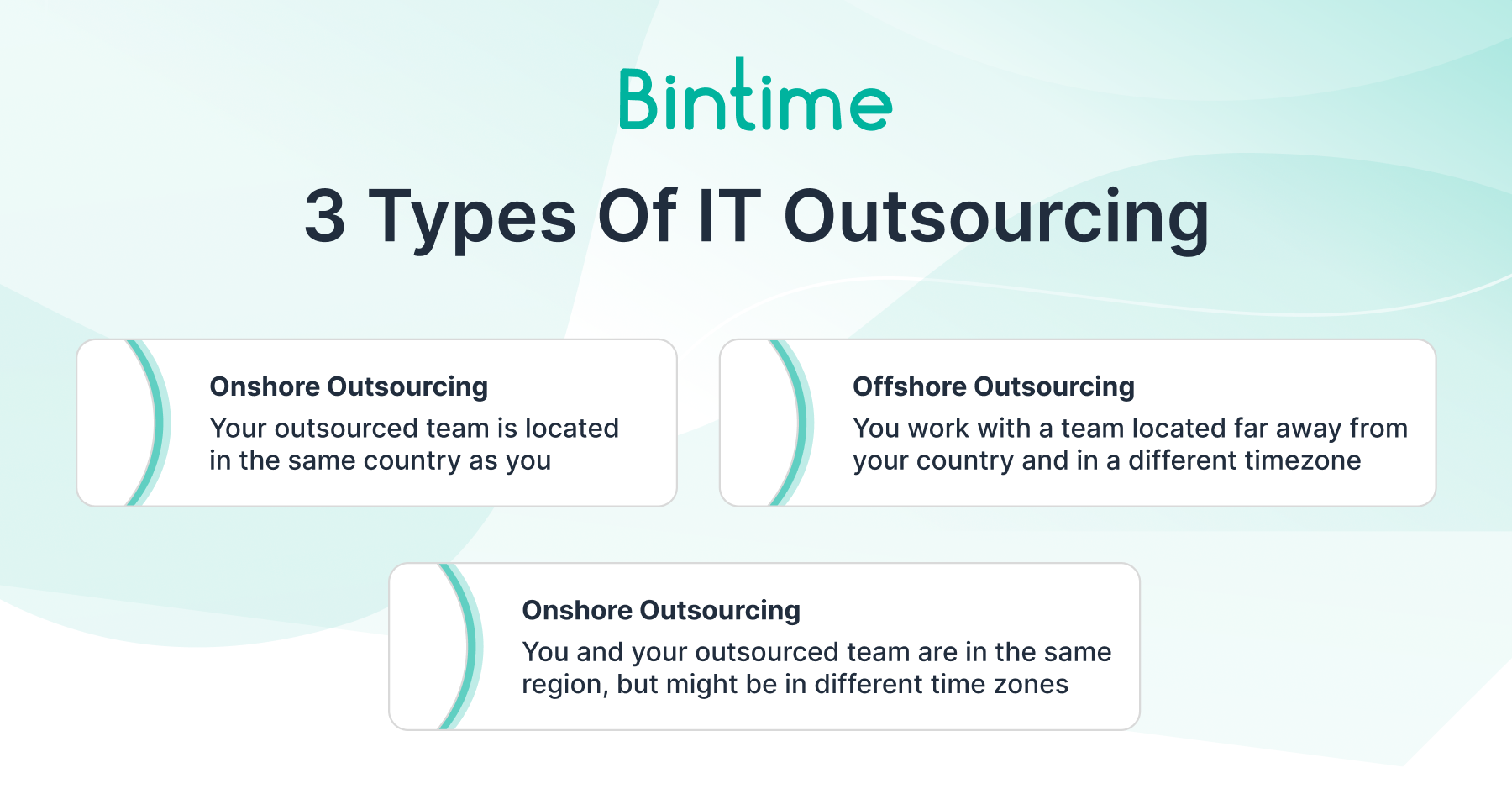The ultimate choice of an outsource partner is as crucial to establishing and growing a business as the budget and talents underlying that business. And the bigger the project, the more necessity for a truly reliable party there is. Of the 2,000 large companies, more than 90% have had ITO contracts in the last five years, i.e., most had delegated part of their work to third-party organizations. Why would they make their projects depend on external specialists?
The fact of the matter is that any growing business, especially a startup, grows faster with well-distributed functions. Building healthy and productive outsourcing partnerships is the key to sustainable development. But it requires strict coordination and trusting communication between teams – you can only put your future in the hands of highly reliable and experienced partners.
So for now, let’s figure out several most common pitfalls IT businesses come across when seeking outsource partners in the market.
Which IT Services are Mostly Outsourced?
IT services as a whole form one of the most popular outsourcing areas. Today, it is rather normal for companies to delegate tasks, parts of a workflow, or even full projects. They understand that it is an efficient, relevant way to get rid of routine along with a host of minor problems and focus on functional business management. But you need to understand what tasks can be normally delegated to partners. Let’s look at the common options.

IT development services or software development
A hired developer is responsible not only for the overall success but also for the support and further operation of the products created in terms of the project. A good partner can help you bring your idea to life, improve quality, speed up time-to-market, and cut development and maintenance costs throughout the product lifecycle.
That is why it is worth going for an outsource partner focused on Product-Based Development. You need to determine the scope and requirements of the project, and the partner will deal with the distribution of team members, choice of the technology stack, and practical implementations. All you need to do is monitor the progress of work via regular reports.
Dedicated development team
A special collaboration model where an outsourced specialist is entirely focused on your project is called a dedicated team. As a client, you get specialists that your existing staff lacks. At the same time, they perform tasks as though they were your in-house professionals, only remotely.
Carefully selected outsourcing IT company staff with extensive experience allows you to achieve the best results and optimize costs. This option is preferable because it will provide flexible resources, the necessary scalability, and transparent communications with a limited budget.
IT consultancy and audit
Expert consultations provide practical advice to optimize processes and improve overall business performance. This is important when you need to take your business to a new level, as well as grant intellectual support and information security of the project.
A professional audit makes it possible to conduct comprehensive diagnostics of software products, including an analysis of the technology stack and code, as well as testing procedures and project management. In turn, this allows you to significantly improve and reliably protect the business as a whole.
Team extension
The team extension model contributes to the rapid increase in the potential of internal teams by integrating the expertise and experience of outsourced professionals. Experts with the necessary technical stack will do everything to make your ideas work. At the same time, you will be able to fully control their performance.
Such outsourcing partnerships allow you to accurately determine the scope of the project and choose the best budget approach. By delegating HR, administration, and infrastructure setup to a partner, you can add employees to the team where and when necessary.
IT infrastructure services
Maintaining the basis of the company’s functionality requires a lot of time, costs, and competent specialists. When in-house resources are not enough, outsourcing helps out.
The contractor can take over the administration, monitoring, restoration, and optimization of corporate IT infrastructures. The success of the most complex project can be guaranteed when the tasks are solved by certified specialists.
Different Types of IT Outsourcing
The remoteness of the third-party team is a critical factor in providing a location-based service. Basically, the three models are most commonly used with their pros and cons.

Offshore outsourcing
This is an option where project development is outsourced to an organization based in another country that is not directly adjacent to yours. The availability of the solution is largely determined by the region of the country of the service provider. Even when you need to hire an interpreter, the service costs of companies from Eastern Europe and India today will be lower with a sufficiently high qualification of specialists.
Cooperation with professionals from another country has significant advantages:
- Outsourcing services are cheaper than hiring individual employees;
- You gain the ability to perform tasks that are beyond the power of your in-house team;
- You get a wide range of offers, given the global market (access to the best talent);
- You also get to cut labor costs.
Going offshore is an ideal solution for many tasks, such as finding a partner to outsource an eCommerce platform without sacrificing profits.
The disadvantages may include differences in culture, corporate ethics, and the difficulty of communicating in different languages. A different time zone can be both a pro (the ability to work 24/7 is important for customer service) and a con (difficult communication between teams).
Nearshore outsourcing
A model where cooperation is formalized with a company located in a neighboring country (in geographical proximity). With this option, it is easier to organize joint work as opposed to working with international outsourced partners. The absence of a time difference will allow you to synchronize processes, schedules, and communications, despite possible problems with knowledge of languages.
The advantages of this model are:
- Simplified communications ─ the possibility of more frequent personal contacts if necessary;
- Reduced costs for transport, communication between offices, delivery/shipping of documentation, products, and components;
- Cultural proximity;
- Possible similarity of the regulatory framework;
- Real-time collaboration.
There is but one drawback – narrower hiring scope and a potential lack of tech maturity across nearshore regions.
Onshore outsourcing
If the partner is located in the same country as you, there should not be a significant difference between development methods, technologies, ways of organizing work, communications, and other important processes. If you choose to outsource nearby located services, no cultural or language barriers are likely to be present.
The main benefits of onshore outsourcing include:
- The fastest start of work with simplified coordination and communications;
- Less general expenses;
- General legislation, including taxation.
While the following shortcomings can be noted:
- Fewer partnership choices;
- Perhaps general problems with the availability and use of new technologies;
- Higher cost of services.
How to Choose the Outsource Partner?
After doing initial research on a project, you may discover a lack of skills and tools to achieve the intended results. The time cost may seem too high.
When you understand what kind of IT service and what type of collaboration you need, you look for outsource partners who can really make your life easier. Here, the correct approach to the process is important, which is mostly based on avoiding annoying mistakes.
Common Mistakes While Choosing the Outsource Partner
Many businessmen have had to deal with problems caused by misjudging the capabilities of their companies and service providers. What factors should a firm consider before outsourcing?
- You need to make sure that your vision of the project and their take on it coincide.
- It is important to discuss all the details before the start of cooperation.
In short, the companion should share your values and set the same goals as you. You must be sure that they include everything necessary in the design and estimate documentation, that they document the code, and do not use assets that violate anyone’s rights. You can make a lot of mistakes in this field, but the most common ones are listed below.
1. Starting without an understanding of your needs and budget
Without a clear understanding of the scope, goals, and needs of the project, the outsourcing provider will not be able to build a competent development strategy in terms of the established budget. You must present to your future partner your own vision of the desired result and potential ways to achieve it.
Do not try to conclude a “cost-efficient” contract focused on the low cost of services. It is important to choose a company with a grip on modern technologies. You need to make sure that the outsource partner fully meets your expectations.
In turn, they will be able to suggest the optimal team size and the time frame needed to complete the project. Regular reviews and testing are essential, so a lack of technical knowledge on your part can create serious risks. Therefore, the team must have both a manager and a tester or QA specialist.
2. Hiring without proper research
Before making an “outsourcing decision”, it is necessary to determine the goals and objectives, as well as the criteria for the quality of services that are transferred to a third-party company. This requires market research across all available sources. Exploring outsource partner’s case studies and asking for references can be quite helpful. Ultimately, you need to find out:
- How many regular customers do they have?
- Do they have the required experience?
- Do they share the same values, beliefs, and corporate culture?
It is necessary to study the portfolio and experience, reviews and testimonials, and the way your supplier is presented in the market. The time spent on this should correspond to the size of the investment and the expected duration of the project.
3. Neglecting the interview process
Relying on proper research only is also not good. When looking for reliable outsource partners, you should not neglect the interview process. During the meetings, you will be able to explore your potential outsourced employees’:
- Interest ─ whether the partner is able to take on the necessary part of your workload;
- Responsibility ─ can communicate and express any concerns or expectations regarding the fate of the project;
- Commitments ─ how well they understand and fit with your company’s culture and values.
To get a complete picture of a potential companion, you can ask questions such as:
- Are you familiar with the industry?
- Are there any new trends in your portfolio?
- How will you communicate with the team?
- Who/which team will be working on the project?
- Will the developers work only on one or several projects?
Only a thorough analysis will help you determine whether the team will be able to implement the project at hand.
4. Trying to work without the execution plan
The difference between project planning and execution planning is quite noticeable. The first allows you to understand the general concept, while the latter involves the outline of practical steps for its implementation. This task needs to be solved together with the team that will deal with it. And the more information and guidance the potential outsource partner gets, the better results they can help you achieve. For this, you need to:
- Designate goals;
- Set tasks: what and when outsourcers should do;
- Define quality criteria and penalties for non-compliance with agreements.
In order to create a well-thought-out strategy and execution plan, things like scope and distribution of work, team size, etc. need to be discussed. The service level agreement (SLA) should specify:
- key performance indicators;
- client wishes and expectations;
- executor’s obligations;
- service cost.
It is also worth concluding a cooperation agreement in which you can prescribe everything else that you need legally.
5. Ignoring the outsourcing partner’s feedback
Your potential outsource partner can take a fresh look at the project and draw important conclusions that can change it for the better. An experienced companion can advise on useful things, such as new technologies and solutions. That’s why a personal relationship with a partner is important. Remember that the prospects for cooperation largely depend on how competently you behave at the first meeting.
Don’t underestimate the importance of a comprehensive technical specification if your service provider recommends that you create one. This can significantly reduce costs in the long run. In addition, an experienced developer will be able to better understand what exactly needs to be included in the final version of the developed software and what is not. You won’t have to waste time adding unnecessary features, and you’ll be able to reduce errors.
Checklists – How to Do and Not Do IT Outsourcing?
The biggest mistake is to consider offers with a low cost of services. When choosing an outsource partner, first of all, you need to consider the quality of the IT services provided and their compliance with your requirements. Only then you can start the process of creating a sustainable model of cooperation.
IT outsourcing do’s
If you manage the process correctly, you will eventually find partners you can trust. The optimal algorithm of actions is:
- Find out what model and type of outsourcing you need. Define the most suitable method that meets all your tasks and needs.
- Outline the project specification, implementation strategies, and expected results. Align your ideas with your partner’s vision to better coordinate collaboration.
- Create a project plan describing the expected product. Your goals and your partner’s aspirations should match.
- Make a list of companies that match your needs. Select the best using industry experts’ ratings.
- Conduct interviews and chat with professionals, then filter the list of the best. Use all available opportunities, including a preliminary study of reviews across professional resources and social networks.
- Build constructive communication with the partner team on a professional and personal level. Use several different communication channels to ensure contact continuity.
- Complete a non-disclosure agreement and other security documents before starting up a project. Identify resources, meaningful deliverables, and secure your project.
- Monitor work at regular intervals for timely status updates and project tracking. The more often workflow checks are taking place, the easier it will be to agree on the necessary changes, and the better the final result will be.
IT outsourcing don’t’s
Now, here’s what you shouldn’t do:
- Throw all responsibility on the partner’s shoulders. Create all the conditions for work and control the execution of tasks more often. Outsourcing while sharing risks with the partner company is the most effective way to go.
- Expect a fixed price. Additional costs may arise during the course of the work. Be open about it with your partner, identify the most important needs and prioritize tasks.
- Look for shortcuts. Software development can be more difficult than expected. It may require changes to the project, improved management, and ongoing monitoring.
- Focus only on your ideas. Be open to suggestions from a partner, but push for any changes that will be critical to your project.
If you go by the book, outsourcing can become a dynamic tool for cutting both costs and time-to-market.
Bottom Line
You should now know what models of outsourced cooperation exist, how to best choose outsource partners, and what mistakes are in no case acceptable. The search process itself may seem a little complicated, but everything is that much simpler when you follow the recommendations above. With a little effort, you will find the right partner and take your business to a height unattainable by competitors.
At Bintime, we are always ready to help. We honor our promises by effectively helping our partners develop products and services. Our consultants and specialists are as interested in the growth of your business as you are, deeply understanding that your success is our success.
Contact us today to get a full set of tools and solutions for the rapid development of your business tomorrow.











